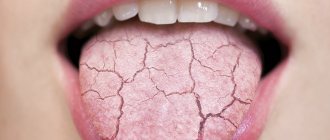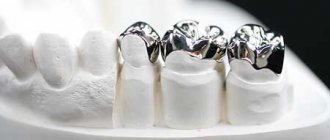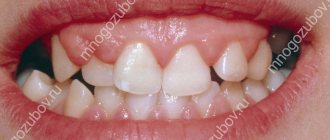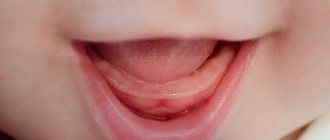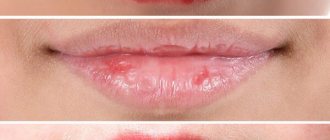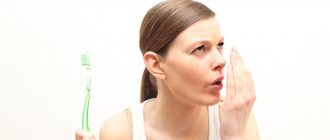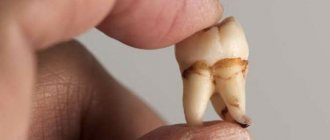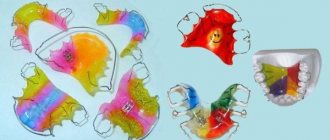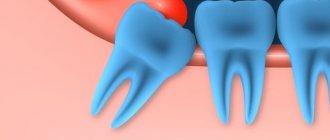Dysarthria in children is a severe impairment of the pronunciation side of speech due to damage to the speech motor system.
Such a defect threatens the child with auditory perception disorder. The result is an inability to perceive information in full, problems with understanding the world around us, and maladjustment. In this case, great responsibility falls on the relatives of the little patient. Timely treatment will help restore the functioning of the speech organs, allow for correct pronunciation, and correction of all aspects of speech function.
Understand the problem
Nowadays, dysarthria is diagnosed in approximately 6% of children. This is a fairly high indicator to classify the disorder as common.
Despite the fact that the disease is quite common, many parents are confused when hearing the diagnosis of “dysarthria” in their child. Due to ignorance, treatment of a child’s pathology may be started late or follow the wrong plan. For children, it is important to do everything on time, including correcting pronunciation, otherwise the incorrect pronunciation model can be firmly fixed and remain forever.
With dysarthria, organic damage occurs to the facial muscles involved in the formation of speech: the muscles of the cheeks, tongue, and the area around the mouth. Nerve fibers innervating muscles and skin are also affected. As a result, facial expressions become impoverished. Dysarthric is deprived of the opportunity to fully work the facial muscles in order to pronounce the desired sound. The baby's speech becomes unintelligible, quiet, and monotonous.
Among the causes of the disorder are:
- severe toxicosis of pregnant women;
- Rhesus conflict;
- intrauterine infection;
- prematurity;
- premature birth;
- intrauterine fetal hypoxia;
- asphyxia of newborns;
- birth injuries;
- hereditary diseases;
- traumatic brain injury;
- hydrocephalus;
- infectious brain damage;
- intoxication of various origins;
- purulent otitis.
Dysarthria often accompanies cerebral palsy and mental retardation.
recognize their child’s illness at the beginning of their journey by the following signs:
- weakness of the facial muscles, accompanied by prolapse of the tongue, half-open mouth;
- spasm of the facial muscles - the child closes his lips tightly;
- late appearance of speech;
- problems with eating food – constant choking, difficulty swallowing, holding food in the cheek for a long time;
- increased salivation recorded after 6 months;
- the baby talks “in his nose” for no reason;
- speech without emotional coloring, too fast or slow. In case of increased tone of the vocal cords, the voice is squeaky;
- distortion, omission of individual sounds;
- impaired fine motor skills - difficulty fastening buttons or tying shoelaces. Cannot sculpt from plasticine, cannot draw due to weakness of holding a pencil;
- poor ear for music;
- speech breathing is impaired. Children, pronouncing a phrase, gasp, pause in pronunciation;
- complete muteness is possible due to paralysis of the facial muscles.
At 5 years old, the articulation of all sounds should be formed. If this does not happen, then the existing tongue-tiedness cannot be attributed to age. Specialist intervention is required. The sooner children go to a speech therapist, the better for them and their parents.
Often the problem is diagnosed as a rib at the age of about 7 years, before entering school. This age is considered late for the start of correction; the work will be more difficult and more effort will be required.
Prevention
Quite often, parents of children suffering from dysarthria blame themselves. But this speech disorder in many cases develops for reasons beyond a person’s control. No doctor can predict the development of dysarthria in the prenatal period, but a pregnant woman’s compliance with these rules will reduce the risk of developing all kinds of central nervous system pathologies:
- Timely consultation with a doctor and registration. In modern medicine, it is customary to monitor a woman throughout the entire period of pregnancy. With the help of various studies, doctors assess the condition of the fetus, reduce the risks of developing various pathologies, etc. But many women neglect this, turn to specialists late or do not register at all. The development of pathology is difficult to predict, but it can be noticed in time and appropriate measures taken. The sooner this is done, the higher the chance of having a healthy baby.
- Proper nutrition and giving up bad habits. No matter how trivial it may sound, this aspect is very important for the health of not only the expectant mother, but also her baby. In order for the fetus to form correctly, it is necessary to provide the body with a sufficient amount of useful microelements. Taking medications, alcohol-containing drinks and smoking can make unwanted adjustments to the process of formation of vital organs and the central nervous system. It is especially important to monitor your diet during the first trimester of pregnancy.
- Refuse to visit public places for a while, especially during periods of increased incidence of influenza and other infectious diseases.
Avoid stress, spend more time outdoors, try to get as many positive emotions as possible!
To prevent the development of dysarthria in early childhood, it is necessary to provide the child with proper care. Head injuries and all kinds of diseases, especially infectious ones, undermine the baby’s health and negatively affect his development.
Be attentive to yourself and your child, your health is in your hands!
Where to start treatment
Treatment of any disease must begin with a correct diagnosis. A young patient is first referred to a neurologist for consultation. After the examination, the specialist, if necessary, prescribes examinations :
- EEG;
- electromyography;
- MRI;
- electroneurography;
- transchannel magnetic stimulation.
After the diagnosis is established, the child is sent to a speech therapist who conducts special speech therapy tests. They allow you to determine the degree of the disease and its form. Subsequently, a neuropsychiatrist and a defectologist are involved in the process.
There are four degrees of the disease :
- 1st degree – the diagnosis is established only through special tests by a competent specialist;
- 2nd degree – speech is understandable, but has minor defects;
- 3rd degree – only close relatives understand the speech;
- 4th degree – speech is incomprehensible or absent.
Depending on the degree of the disorder, the specialist prescribes treatment and carries out corrective measures.
Symptoms
Parents can suspect hypotension simply by observing their child. Immediately after birth, the newborn exhibits physiological hypertonicity, so decreased muscle tone is immediately noticeable. At an older age, tone disturbances are also noticeable.
Possible signs:
- During the newborn period, the baby's arms and legs are not tucked towards the body; he lies in the “frog” pose with straightened arms and legs;
- Refusal of breastfeeding;
- Frequent regurgitation;
- Does not turn the head, does not hold the head at 3-4 months;
- Does not roll over at 5-6 months;
- Does not sit up independently at 6-7 months;
- Does not crawl on all fours at 7-9 months;
- Does not hold objects in hands (at 3-4 months);
- Lethargic, unemotional.
Additional diagnostics are carried out by the doctor during the examination. Looks for the presence or absence of neurological signs of hypotonicity, the presence of pathological reflexes, and, if necessary, prescribes additional research methods: ultrasound, neurosonography, EEG, MRI and others.
Sequence of treatment measures
If you believe that the treatment of dysarthria comes down to visits to a speech therapist, where the dysarthric person is taught to form a tube with his lips, then your opinion is wrong. There is a certain sequence of events, which is not recommended to be violated.
Elimination of dysarthria begins with restoration of the speech-motor system. To do this, the baby is given a speech therapy massage to develop fine motor skills. Breathing exercises are also used.
Speech therapy massage is one of the most effective methods of restoring the functioning of the speech apparatus. Massage affects the muscles, allowing them to normalize their tone. Therefore, the specialist first determines its level: hypo- or hypertonicity.
Speech therapy massage is divided into several types:
- manual;
- mechanical;
- hardware.
The manual technique is based on the impact of fingers on certain areas of the cheeks, lips, and tongue. The specialist carries out stroking and slight kneading of the muscle frame of the lips, cheeks and chin. Connects lips with fingers in vertical and horizontal positions. Massages the soft palate.
Mechanical technique involves influencing problem areas using special probes.
The hardware method uses vacuum, vibration, and temperature devices. It allows you to restore the nerve pathways connecting muscles with centers in the brain.
Dysarthric children are able to independently massage at home. simple exercises for this :
- baring teeth;
- lip stretching;
- open - close your mouth;
- the child puts a candy on a stick in his mouth, the adult takes it out. The smaller the volume of candy, the more difficult it is to do the exercise.
Massage allows you to:
- restore normal muscle tone;
- eliminate pathological movements of speech muscles;
- increase the amplitude of articulatory actions;
- makes muscles work that were not previously involved in the process;
- coordinates the movement of speech organs.
Types of tongue massage?
Tongue massage can be done manually. Manual speech therapy massage is performed by a speech therapist using the fingertips. Manual speech therapy massage is both an independent stage of tongue massage and can be a preparatory stage for the second type of speech therapy massage - probe massage of the tongue.
The second type of speech therapy massage is probe massage. Probe speech therapy massage is performed with special speech therapy probes. Speech therapy probes are special “sticks” that have different shapes to influence different structures of the oral cavity. Speech therapy probe massage is deeper than manual tongue massage. In some cases, a specialist may replace the probe with a toothbrush or other device. The main thing is that the specialist clearly understands what he wants to achieve!
Breathing exercises
Speech
breathing is a complex process consisting of a strict relationship between the respiratory act and articulation. In small dysarthrics, such coordination is impaired. Before pronouncing the phrase, children take insufficient breath. They are able to speak while inhaling or at the very end of exhaling. Non-speech breathing is characterized by superficiality and rhythm instability.
Correct speech breathing ensures smoothness and softness of speech. With dysarthria, it is very important to improve this aspect of the process. Breathing exercises were developed for this purpose.
The most effective is breathing exercises according to A.N. Strelnikova . This is a set of original exercises that have no analogues in the world. The exercises focus on inhalation. It should be sharp, short, and delivered through the nose. When exhaling, attention is minimal. It is carried out arbitrarily.
There are main rules for performing exercises , if followed, the effect will be noticeable very quickly:
- The child takes a sharp, emotional, active breath through his nose. An analogy is drawn with the feeling of burning. At the same time, you can repeat: “Anxiety, it smells like burning,” and inhale the air, as if sniffing. Attention is concentrated on inhalation.
- Exhalation is done through the mouth. We explain to the baby that there is no need to hold back the air coming out. Let it come out spontaneously, without control.
- Inhale should be done as if inflating a car tire. Frequency – 60-70 breaths/minute. Pause – up to 3 seconds. In one lesson you need to perform 1000-2000 repetitions.
- The exercise should be done easily, without tension, without leading to a state of lack of air. Everything is within accessible limits.
The lesson begins with a warm-up, and only then can you move on to the main part.
Examples of exercises:
- half squat We bring one leg forward, the other behind. We squat shallowly, leaning on the front leg. While squatting, we take a short, rhythmic breath;
- holding your breath. We take a short breath while leaning forward. We hold our breath while counting to eight. We gradually increase the quantity.
If left untreated
It is important to identify hypotension in time. Moms who have no experience with babies may not notice problems in their first child. It’s good when an experienced person is nearby or a doctor identifies the violation. If the decreased tone is not treated, it will affect the further development of the child. Much later he will begin to hold his head, crawl, and walk.
Violation of the appearance of these skills causes a delay in mental and speech development in the child. The development of his central nervous system occurs through the activation of motor functions. It is better to play it safe and consult a neurologist in vain than to miss alarming symptoms.
It is worth considering one more detail: hypotonia can manifest itself at different ages. It can be diagnosed almost immediately after birth - by checking reflexes. In this case, the cause of the disorder usually lies in birth trauma. Also, a violation of muscle tone can appear at any age, but its appearance is especially dangerous in the first 2 years of life, since this most often indicates a disturbance in the development of the central nervous system. At an older age, hypotension is usually a sign of complications after infectious or viral diseases.
Development of fine motor skills
It would seem, what is the connection between correct speech and finger movement? It turns out that the center of speech and finger motor skills are located nearby in the brain, stimulating each other’s work. The better developed fine motor skills, the better and faster the development of speech.
Digging a little from the topic, I would like to simultaneously explain to parents that movement in general helps strengthen neural connections that allow you to remember new information. A sedentary child is difficult to teach.
Developing motor activity of the fingers allows you to enrich your vocabulary and improve the phonemic aspect of speech. There are many options for developing fine motor skills: modeling from plasticine; working with paper (sheets can be crumpled, torn, pieces plucked off, folded in a certain sequence); designing crafts, creating applications, collages will also develop creative thinking.
Specialists use finger gymnastics, special attributes to stimulate motor activity of the finger in:
- Pinch your earlobe between your thumb and index finger. Walk along the edge of the ear with massage movements;
- spread your fingers wide. Clap your palms until all fingers touch;
- bend your fingers. Using massaging movements, move from the ear to the crown;
- A child ties knots on a rope. Then he runs them over with his fingers;
- the use of various balls - corrugated, with spikes, stuffed with balls. Squeezing/unsqueezing them with your hands;
- use of expanders;
- clothespins, computer keyboards, phones with buttons.
There are many devices, specialized and household, that allow you to work on the development of fine motor skills. A specialist will tell parents about possible options and explain how to conduct classes independently at home.
Speech therapy massage and dentistry! What's the connection? And what do we use in Dial-Dent?
People with malocclusion and uneven teeth almost always have improper and unbalanced functioning of the muscles of the tongue, lips, chewing muscles and other muscles of the masticatory organ. Moreover, the modern concept of the causes of the formation of bite defects suggests that most dental defects are caused by improperly working muscles. Incorrect speech, improper functioning of the tongue when swallowing and chewing, asymmetrical pressure of the tongue - all this leads to the fact that the teeth can move in different directions under certain conditions. This is how a deformation of the bite occurs, which is more pronounced the more incorrectly the tongue and other muscles work.
Most orthodontists, without delving into the work of muscles and without consulting with speech therapists, install braces or aligners and straighten the teeth without taking into account the condition of the muscles. This approach is outdated and almost always leads to relapse, when the teeth become crooked again some time after treatment. Knowing this, older orthodontists force their patients to wear retainers. Retainers are structures that keep teeth aligned. This could be a wire glued to the teeth or a plastic mouthguard to wear at night.
At Dial-Dent, we always take into account the muscular cause of malocclusion. The participation of a speech therapist in the diagnosis and in the process of straightening teeth makes it possible to remove or correct the myofunctional causes of deformities. This interdisciplinary approach is more modern and gives the best and most stable treatment results! After treatment, relapses do not occur because muscle balances are leveled. Accordingly, the orthodontic treatment itself occurs faster and without problems with the participation of a speech therapist-myofunctional therapist.
Pronunciation correction
After establishing the functioning of the articulatory apparatus and restoring muscle activity, the speech therapist proceeds to correcting incorrect pronunciation.
Typically, children exhibit the following pronunciation inaccuracies:
- omission of individual sounds, often “r”;
- replacing some sounds with others - “wak” instead of “rak”;
- interdental pronunciation, the so-called lisp;
- in isolation the sound is pronounced correctly. Problems appear when entering a word.
If such changes were noticed by parents, then speech therapy work should begin immediately, without waiting for 5 years.
Pronunciation correction requires an individual approach. The specialist determines which sounds are preserved and pronounced correctly. Work begins with sounds distorted to the least extent possible. Before performing them, it is necessary to teach children to distinguish them by ear.
The specialist’s task boils down to the following:
- modeling of basic articulation patterns - production of hissing, whistling, sonorant, palatal sounds;
- production of isolated sound;
- sound fixation, automatic inclusion in speech. First, for fixation, words are used in which the sound is present in an exaggerated form. Then any words with the desired sound symbol;
- pronunciation of a sound with an oppositional sound: sa-sha, sfa-tfa.
A speech therapist, in addition to the pronunciation aspect of speech, teaches the child lexical and grammatical basics, develops phrasal speech, and gives the basics of writing and reading skills.
